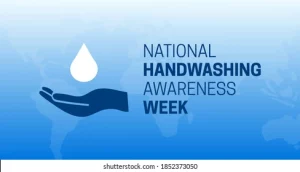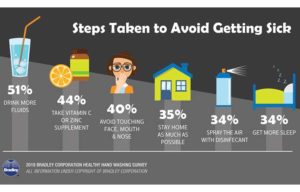Facts about Handwashing:
- On average, you come into contact with 300 surfaces every 30 minutes, exposing you to 840,000 germs.
- Only about 5% of people wash their hands correctly.
- Most people only wash their hands for 6 seconds.
- Around 33% of people don’t use soap when washing their hands.
- Up to 80% of communicable diseases are transferred by touch.
- Proper handwashing can reduce diarrhea rates by 40% and respiratory infections by close to 20%.
- Failing to wash hands correctly contributes to nearly 50% of all foodborne illness outbreaks.
- Only 20% of people wash their hands before preparing food, and 39% before eating food.
- About 7% of women and 15% of men do not wash their hands at all after using the bathroom.
- Most bacteria on our hands is on the fingertips and under the nails. The number of bacteria on our fingertips doubles after using the bathroom. Most people wash the palms of their hands and miss everything else.
- Damp hands are 1,000x more likely to spread bacteria than dry hands. Only about 20% of people dry their hands after washing them.
- There is fecal matter on 10% of credit cards, 14% of banknotes and 16% of cellphones.
- Approximately 39% of people don’t wash their hands after sneezing, coughing or after blowing their nose.
- Elevator buttons harbor 22% more bacteria than toilet seats.
- Reminder signs are successful in encouraging more handwashing.
- Dirty sinks result in less handwashing.
- Handwashing rates are higher in the mornings than evenings.
If everyone did handwashing properly many infections could be decreased from respiratory, nasal, to foodborne illnesses. Good handwashing techniques can block alot of illnesses. While the majority of people as high as 95% claim to practice proper hand hygiene, studies show that only 67% of people practice any sort of hand hygiene.

